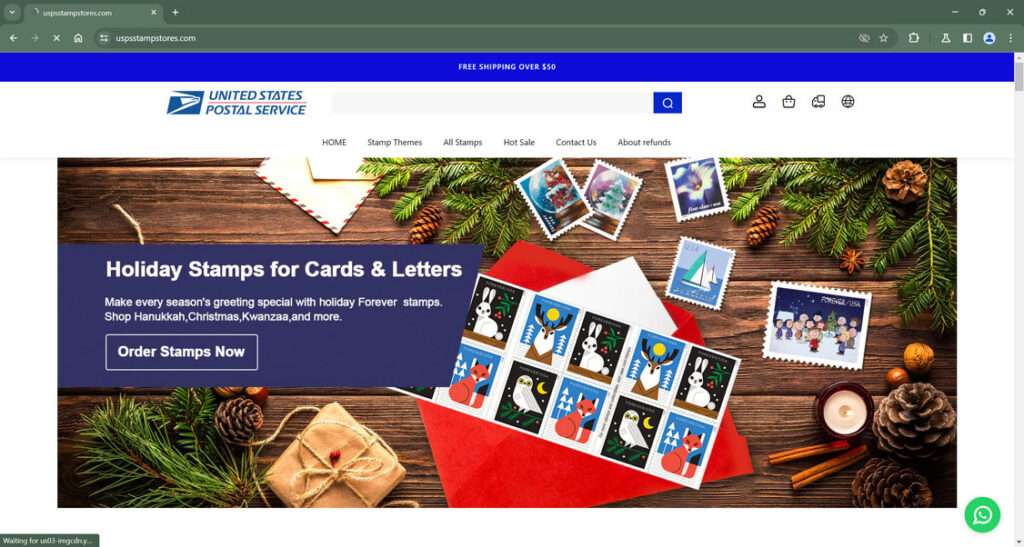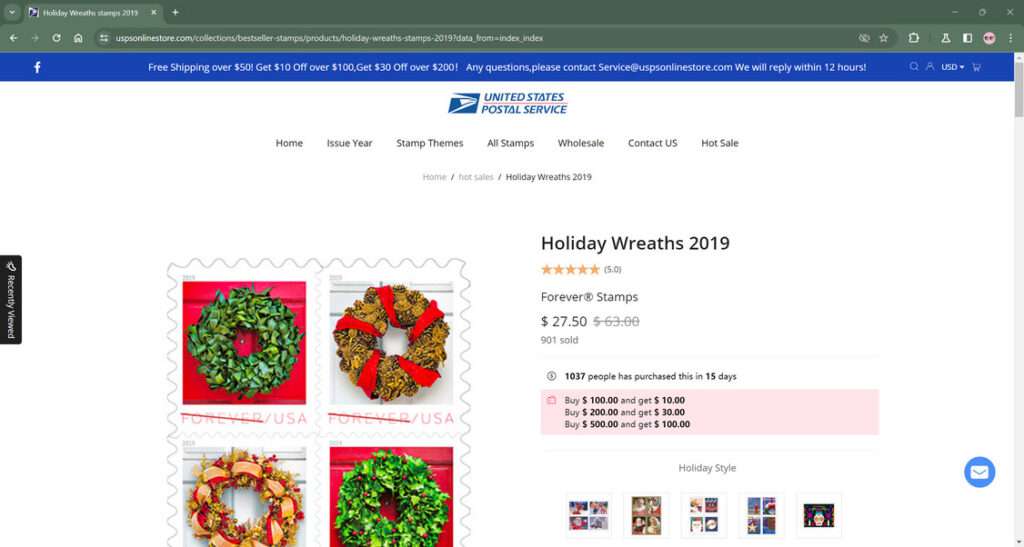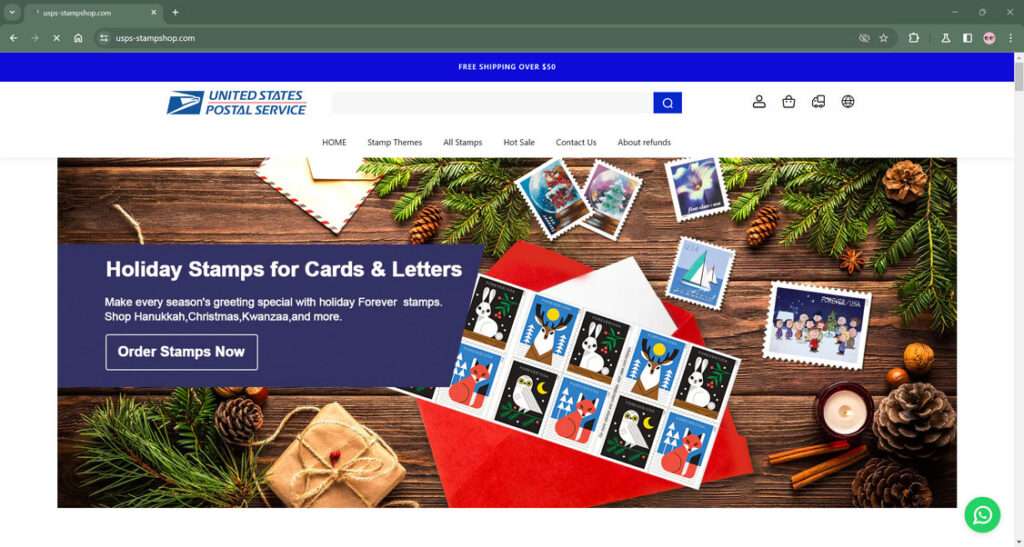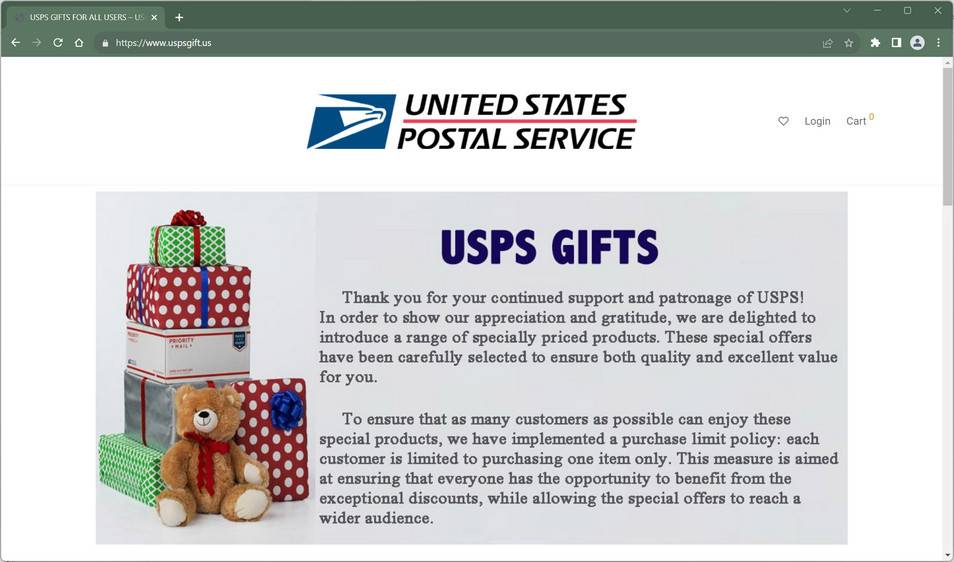As the premier postal service facilitating mail and package delivery across America, the USPS brand is being exploited by stamp sale scammers creating fake websites and social media ads promising extreme bulk discounts on a range of commemorative and special edition stamps. This article breaks down exactly how this scam ensnares victims plus tips to avoid exploitation.





Overview of Fake USPS Stamps Sales Scamming Shoppers
The real USPS Postal Store at USPS.com focuses on providing all essential mailing products like Forever stamps, collectors series stamp packs and custom design stamps for convenient direct-to-consumer purchase. However, USPS’s strong value reputation is unfortunately attracting stamp sale scams.
Highly-convincing fake USPS websites engineered to mimic USPS sites are promoted through ads touting unrealistic bulk stamp blowout markdowns up to 75% off. Yet when orders arrive, victims report profound disappointment:
Common Stamps Scam Warning Signs:
- “75% off” bulk rates too good to be true
- Suspicious URLs slightly differing from USPS sites
- Poor grammar, spelling errors and unprofessional site text
- Dysfunctional customer service phone numbers and addresses
When lured onto these deceptive USPS knockoffs instead of legitimate Postal Store sites, stamp buyers report:
- No items shipped – Most likely outcome after payments processed
- Cheap knockoffs – Low-quality fakes that don’t match product images/descriptions
- Used or damaged goods – Showing clear signs of wear and abuse
- Random wrong items – Products that weren’t even ordered
And adding insult to injury, users’ personal and financial data also gets stolen during checkout on these elaborate sham websites enabling additional downstream identity theft by fraudsters.
By understanding the cunning techniques these fake USPS stamp scams deploy, shoppers can sidestep their tricks and securely order from official USPS sites.
How to Spot Counterfeit USPS Stamp Sale Websites
While scam sites tout unbelievable bulk rate markdowns, their shifty designs reveal fraud once aware of their tactics.
Analyze Website URLs
Fake domains barely differ from the real USPS.com:
usps-shoponline.store
uspsstampsale.online
uspsonlinestore.siteMost are recently created in 2022-2023 based on domain age checks.
Review Contact Information
No physical addresses or phone numbers provided by sites – only dubious email addresses:
support@usps-shoponline.store
contact@uspsstampsale.online Non-transparency signals shady operations.
Assess Pricing Claims
Prices seem unbelievable compared to normal USPS rates. Stamp packs are discounted 75% off from $12 down to $3 per 100 count.
Scrutinize Branding and Slogans
USPS logo, fonts, colors and slogans are used liberally:
- “Going out of business sale!”
- “Limited-time free shipping”
But inspect branding closely for subtle imperfections exposing fakery.
Staying observant for these fake signals makes avoiding stamp sale scams achievable when shopping online.
How to Catch Fake USPS Ads on Social Media
Fraudulent USPS ads on popular platforms frequently employ unbelievable “75% off” bulk rate slogans and enticing phrases like “Final clearance!” to manipulate shoppers. But their repeatable patterns expose bogus natures.
Dubious Facebook Ad Bulk Rate Savings Are Manipulation Ploys
Watch for Facebook ads boasting:
- “Going out of business forever – all stamp stock 75% off!”
- “Last chance clearance sale today only!”
Other red flags include stolen USPS branding, odd links, disabled comments and fake customer images. Cross-checking helps identify falsified Facebook ads.
Instagram Ad Messaging Preys On Collector FOMO
Scam Instagram ads touting:
- “Final hours to get discontinued stamps at liquidation prices!”
- “Massive store shutdown means big savings – don’t hesitate!”
Be skeptical of engagement inconsistencies, account age discrepancies and redirection attempts. Understanding these behaviors reveals Instagram fakes.
TikTok Video Tactics Pressure Immediate Action
Counterfeit video ads demonstrate these consistent red flags:
- Fake AI-generated footage instead of showing real USPS postal stores
- Captions listing suspicious external site URLs
- USPS logo brand impersonations
- Disabled comments
Despite potential visibility, typical scam ad characteristics make real vs fake discernment achievable on TikTok.
Scammers manipulate slogans, discounts and scarcity tactics frequently. But awareness of repeatable suspicious patterns empowers social media users to outsmart stamp cons.
How Users Get Scammed By Fake USPS Bulk Stamp Sales
Successfully scamming shoppers using counterfeit USPS stamp promotions takes coordinated planning and execution. Here is how victims get duped:
1. Scammers Architect Fake “USPS” Online Stores
Sophisticated scam artists build intricately designed replica USPS websites made to mirror official postal sales channels.
While URL addresses appear legitimate, they utilize similarly named domains diverting away from real stores:
usps-shoponline.store
uspsstampsales.online
uspsonlineretail.website The fake sites mimic USPS branding, product galleries and navigation – while barely differing enough to control mimic domain names fraudulently.
2. Bogus USPS Stamp Sale Ads Promoted on Social Media
Scam rings promote sham USPS domains using social media ads touting unbelievable bulk rate discount messaging to fool users. These primarily leverage Facebook, Instagram and YouTube due to immense reach.
The ads display exaggerated headlines like “USPS discontinuing stamp designs – clearance prices up to 75% off before they are gone forever!”. Links then route through obscured URL shorteners hiding the fraudulent destinations.
When social media users click on these advertisements, they get redirected to the sophisticated fake postal stores instead of legitimate USPS websites.
3. Shoppers See Outrageous Bulk Prices Discounted Over 75% Off
Upon landing on the convincing duplicate USPS domains, visitors behold what appears as incredible sales with extreme 75%+ bulk price reductions.
$12 packs of commemorative stamps all show insanely marked down to just $2 each when buying 100+ rolls – making collector’s items seem virtually free compared to Postal Store rates.
Such irrational prices are shown next to much higher normal USPS pricing for authenticity. This further fools visitors into assuming the deals are authorized clearance offers before stamp inventory gets discontinued forever.
4. Checkout Forms Steal Users’ Financial and Personal Data
As shoppers rush to lock-in seemingly impossible stamp investment grabs, mandatory order forms demand extensive sensitive customer data including:
- Full legal names
- Home addresses
- Phone numbers
- Credit card numbers
- Security codes
- Expiration dates
This mined contact/payment data then goes directly to sophisticated scammers rather than legitimately securing bulk rate stamp orders.
5. No Orders Fulfilled or Terrible Products Received Instead
Soon victims find they got scammed when stamp orders never arrive. Instead purchases either:
- Vanish entirely after payments with zero fulfillment
- Extremely poor quality fakes get shipped instead
- Used, damaged or tampered goods arrive
- Random wrong products show up unrelated to specifics ordered
Now victims lack real merchandise while fraudsters possess both stolen money and sensitive personal data enabling additional identity theft downstream.
What To Do If Scammed By a Fake USPS Stamp Sale
If you unfortunately got tricked by a counterfeit USPS stamp promotion online, take these steps immediately to mitigate damages:
Report Fraudulent Charges: Contact your credit card provider used on scam sites ASAP. Request they reverse any illegal purchases for undelivered goods. Provide details surrounding the sham websites and failed delivery.
Initiate Credit Reports Freeze: Freeze credit reports at Equifax, Experian and Transunion stopping criminals opening unauthorized new accounts under your identity with stolen information.
Monitor Financial Account Activity: Watch statements routinely for fraudulent charges indicating potential identity theft after being scammed. Notify institutions immediately regarding any suspicious transactions.
Report Fake Websites: Submit details on scam websites encountered to the FBI’s IC3 Complaint Center and FTC’s reporting page to combat cons.
Getting exploited by online shopping scams feels awful. But responding swiftly helps restrict damages while preventing additional trickery through frozen credit and fraud reporting.
Frequently Asked Questions About Fraudulent USPS Stamp Sales
Concerned about counterfeit USPS stamps sales duping collectors online? Here are answers to the most frequently asked questions around identifying and avoiding this prolific postal scam:
Are the 75% off USPS stamp sales promoted on Facebook legitimate?
Unfortunately most are completely fake. Scam ads route traffic to elaborate counterfeit websites stealing personal/financial data instead of driving real bulk rate sales. Always verify URLs match the official USPS Postal Store domain before giving any website supplying deeply discounted stamps your data.
What are signs of a fraudulent USPS stamps sale website?
Warning signs include misspelled USPS URLs, subtly altered branding, recently created domains, grammar/spelling errors, acceptance of online payments, ridiculous pricing too cheap to be believable compared to current USPS stamp rate cards, and no working customer service phone numbers.
What happens if you order counterfeit USPS stamps from a scam website?
In the majority of cases, victims find their entire order simply disappears after payment with nothing ever shipping. No valid USPS tracking number will be supplied post-purchase. In rarer instances, victims received cheap stamp replicas from international origins, clearly tampered with stamps showing previous use or cancellation markings, or random household goods shipped totally unrelated to what was ordered. Plus the scammers steal your financial and personal data enabling identity theft.
Can victims reclaim losses from fraudulent stamp websites?
If you paid by credit card, immediately file a fraud complaint requesting charge reversal – however protections covering international counterfeit purchases may be limited. Debit card transactions carry much less recourse through banks. Prevention is key, so always do your due diligence thoroughly vetting any online retailer offering absurdly discounted postal rates before handing over payment information or completing checkout processes. Steep bulk pricing frequently signals a scam attempting to prey on excessive consumer optimism.
Where should counterfeit websites be reported?
Submit website details, screenshots and transaction records to the Internet Crime Complaint Center (IC3.gov) and US Postal Inspection Service to aid investigations, tracking and prevention efforts against online postal scams. Spread awareness by reporting the ad itself to the social media platform which distributed it as well. The more evidence authorities have on hand regarding scam communications tactics and fraudulent websites misappropriating USPS intellectual property, the more victims they can potentially help avoid falling prey moving forward. Remain vigilant online!
The Bottom Line – Verify Before Providing Data to USPS Stamp Blowout Claims
As USPS retains immense popularity facilitating postal services relied on by millions nationwide, their trusted branding remains an alluring target for stamp scammers seeking to deceive collectors through elaborate fake promotions. But being an informed consumer who verifies legitimacy remains the ultimate scam prevention.
Carefully check URLs match official USPS sites while watching for other common red flags covered here before assuming authenticity or providing data. Question improbable bulk rate pricing on alleged limited-time sales not aligned with normal USPS first-class stamp rates which currently start at $0.60 per stamp.
And never submit personal/financial data without thoroughly vetting sites first, even if initial branding checks out. Staying vigilant for common online shopping scam indicators makes avoiding cons easier. Think twice when unbelievable deals arise unexpectedly.










